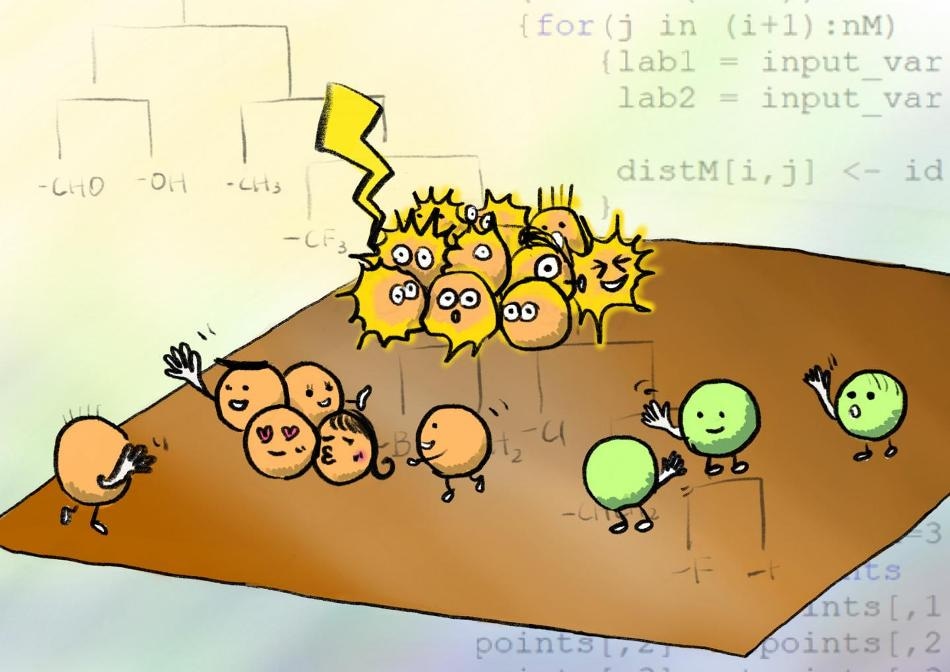Jul 27 2018
Daniel Packwood of Kyoto University's Institute for Integrated Cell-Material Sciences (iCeMS) and Taro Hitosugi of the Tokyo Institute of Technology have developed a new method. This method requires connecting the chemical properties of molecules with the nanostructures that develop because of their interaction.
 Molecules interact and align with each other as they self-assemble. This new simulation enables to find what molecules best interact with each other to build nanomaterials, such as materials that work as a nano electrical wire. (Image credit: Illustration by Izumi Mindy Takamiya)
Molecules interact and align with each other as they self-assemble. This new simulation enables to find what molecules best interact with each other to build nanomaterials, such as materials that work as a nano electrical wire. (Image credit: Illustration by Izumi Mindy Takamiya)
A machine learning method produces data, which is subsequently used to create a diagram that classifies various molecules based on the nano-sized shapes they form. This method could aid materials scientists to find the most suitable molecules that can be used to synthesize target nanomaterials.
If a bottom-up method is used to fabricate nanomaterials, it is important to find 'precursor molecules' that interact and align properly with each other as they self-assemble. However, understanding how precursor molecules will interact and the type of shapes they will form has been a major challenge.
In this context, bottom-up fabrication of graphene nanoribbons is receiving a great deal of attention because of their promising applications in tissue engineering, electronics, bio-imaging, and construction. Using bianthracene precursor molecules, which contain bromine 'functional' groups linked to them, is one way to produce these graphene nanoribbons. The bromine groups forms nano-sized chains by interacting with a copper substrate. Upon heating these chains, they transform into graphene nanoribbons.
Hitosugi and Packwood used this method to test their simulator for making graphene nanoribbon. Data was fed into the model regarding the chemical properties of various molecules that can be adhered to bianthracene in order to 'functionalize' it and enable its interaction with copper. This data underwent a set of processes that eventually resulted in the formation of a 'dendrogram'.
This demonstrated that linking hydrogen molecules to bianthracene results in the development of robust one-dimensional nano-chains. Amidogen, chlorine, bromine, fluorine, and vinyl functional groups resulted in the formation of fairly strong nano-chains. Methyl and trifluoromethyl functional groups resulted in the development of weak one-dimensional molecule islands, and aldehyde and hydroxide groups resulted in the development of robust two-dimensional tile-shaped islands.
The data generated in the dendogram altered based on the available temperature data. The categories mentioned above apply when the interactions are performed at a temperature of -73 °C. The results, however, changed with warmer temperatures. According to the team, the data can be applied at low temperatures where the effect of the chemical properties of the functional groups on nano-shapes is extremely clear.
The method can also be applied to other precursor molecules and substrates. The researchers claim that their technique is similar to the periodic table of chemical elements, which categorizes atoms based on the way they bond to one another.
"However, in order to truly prove that the dendrograms or other informatics-based approaches can be as valuable to materials science as the periodic table, we must incorporate them in a real bottom-up nanomaterial fabrication experiment," conclude the researchers in their study reported. "We are currently pursuing this direction in our laboratories."